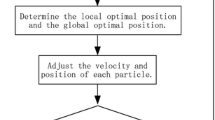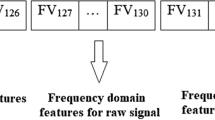Abstract
A large amount of redundant data brings challenges for fault diagnosis to achieve satisfactory performance. Therefore, it is particularly important to identify the fault quickly and accurately. In order to solve this problem, this paper applies a novel optimization algorithm, which is slime mould algorithm (SMA) combined with support vector machine (SVM), for fault diagnosis. Firstly, the experimental circuit is analyzed by Monte Carlo to obtain the voltage signals of different fault states. Then the collected voltage signal is subjected to wavelet packet transformation to extract the feature set of the data, and Principal Component Analysis (PCA) is used to reduce the dimension to eliminate redundant data. Finally, the SMA-SVM classifier is used for fault diagnosis and the results are analyzed. Two circuits are chosen as fault circuits, in order of complexity, the four-opamp second-order high-pass filter circuit and the Leapfrog filter circuit. Since SMA optimizes SVM to improve the performance of the classifier, the paper compares SMA with grid search method, particle swarm Optimization (PSO), genetic algorithm (GA), simulated annealing algorithm (SA), and ant colony algorithm (ACA) in terms of the results of the optimized parameters, the time of fault classification and the accuracy of diagnosis after optimizing the classifier. The results show that the SMA-SVM classifier not only demonstrates the advantages of SMA's excellent merit seeking ability and fast convergence, but also has better robustness.



















Similar content being viewed by others
Data availability
The data that support the findings of this study are available from the authors upon reasonable request.
References
Arabi A, Bourouba N, Belaout A et al (2019) An accurate classifier based on adaptive neuro-fuzzy and features selection techniques for fault classification in analog circuits. Integration 64:50–59
Cortes C, Vapnik V (1995) Support vector machine. Mach Learn 20(3):273–297
Deng J, Chen W, Wang C et al (2021) Prediction model for coal spontaneous combustion based on SA-SVM. ACS Omega 6(17):11307–11318
Ding X, Yang F, Ma F (2022) An efficient model selection for linear discriminant function-based recursive feature elimination. J Biomed Inform 129:104–107
Ewees AA, Abualigah L, Yousri D et al (2021) Improved slime mould algorithm based on firefly algorithm for feature selection: a case study on QSAR model. Eng Comp 3:1–15
Ewees AA, Al-Qaness MAA, Abualigah L et al (2023) Enhanced feature selection technique using slime mould algorithm: a case study on chemical data. Neural Comp Appli 35(4):3307–3324
Fu Y, Gao Z, Liu Y, Zhang A, Yin X (2020) Actuator and sensor fault classification for wind turbine systems based on fast fourier transform and uncorrelated multi-linear principal component analysis techniques. Processes 8(9):1066. https://doi.org/10.3390/pr8091066
Gao Z, Cecati C, Ding SX (2015) A survey of fault diagnosis and fault-tolerant techniques—part ii: fault diagnosis with knowledge-based and hybrid/active approaches. IEEE Trans Ind Elect 62(6):3768–3774
Gao T, Yang J, Jiang S (2020) A novel incipient fault diagnosis method for analog circuits based on GMKL-SVM and wavelet fusion features. IEEE Trans Inst Meas 70:1–15
He Y, Sun Y (2002) Neural network-based L1-norm optimisation approach for fault diagnosis of nonlinear circuits with tolerance. IEE Proce-Circ Dev Syst 148(4):223–228
Huang W, Liu H, Zhang Y et al (2021) Railway dangerous goods transportation system risk identification: Comparisons among SVM, PSO-SVM, GA-SVM and GS-SVM. Appl Soft Comp 109:107541–107557
Kalpana V, Maheswar R, Nandakumar E (2020) Multiple parametric fault diagnosis using computational intelligence techniques in linear filter circuit. J Amb Intell Human Comp 11:5533–5545
Le Cuong- T, Nghia- Nguyen T, Khatir S et al (2021) An efficient approach for damage identification based on improved machine learning using PSO-SVM. Eng Comp 2:1–16
Li S, Chen H, Wang M et al (2020) Slime mould algorithm: A new method for stochastic optimization. Fut Gen Comp Syst 111:300–323
Lu S, Gao Z, Xu Q, Jiang C, Zhang A, Wang X (2022) Class-imbalance privacy-preserving federated learning for decentralized fault diagnosis with biometric authentication. IEEE Trans Indust Inform 18(12):9101–9111
Parai M, Srimani S, Ghosh K, Rahaman H (2022) Multi-source data fusion technique for parametric fault diagnosis in analog circuits. Integration 84:92–101
Rahimilarki R, Gao Z, Jin N et al (2022) Convolutional neural network fault classification based on time-series analysis for benchmark wind turbine machine. Rene Energy 185:916–931
Safaeipour H, Forouzanfar M, Casavola A (2021) A survey and classification of incipient fault diagnosis approaches. J Proce Cont 97:1–16
Su X, Cao C, Zeng X et al (2021) Application of DBN and GWO-SVM in analog circuit fault diagnosis. Sci Rep 11(1):1–14
Tan Y, He Y, Cui C et al (2008) A novel method for analog fault diagnosis based on neural networks and genetic algorithms. IEEE Trans Instrum Meas 57(11):2631–2639
Yu D, Zhang A, Mu W (2021) SCA-SVM Fault Diagnosis of Analog Circuits Based on Transfer Learning. In: 2021 IEEE 10th Data Driven Control and Learning Systems Conference (DDCLS) IEEE:818–823
Zhang A, Chen C, Jiang B (2016) Analog circuit fault diagnosis based UCISVM. Neurocomputing 173(JAN.15PT.3):1752–1760
Zhang A, Yu D, Zhang Z (2022a) Fault diagnosis optimization method based on transfer learning. Processes 10(2):362–432
Zhang J, Jiang Y, Li X et al (2022b) An adaptive remaining useful life prediction approach for single battery with unlabeled small sample data and parameter uncertainty. Reliab Eng Syst Safety 222:1–11
Zhang J, Zhang K, An Y et al (2023) An integrated multitasking intelligent bearing fault diagnosis scheme based on representation learning under imbalanced sample condition. IEEE Transact Neural Networks Learn Syst. https://doi.org/10.1109/TNNLS.2022.3232147
Acknowledgements
This work is supported partially by National Natural Science Foundation of China (Project no. 61673074), Natural Science Foundation of Liaoning, China (Project no. 2019MS008), Education Committee Project of Liaoning, China (Project no. LJKZ1011,LJ2019003).
Author information
Authors and Affiliations
Corresponding author
Additional information
Publisher's Note
Springer Nature remains neutral with regard to jurisdictional claims in published maps and institutional affiliations.
Rights and permissions
Springer Nature or its licensor (e.g. a society or other partner) holds exclusive rights to this article under a publishing agreement with the author(s) or other rightsholder(s); author self-archiving of the accepted manuscript version of this article is solely governed by the terms of such publishing agreement and applicable law.
About this article
Cite this article
Yu, D., Zhang, A. & Gao, Z. Fault diagnosis using redundant data in analog circuits via slime module algorithm for support vector machine. J Ambient Intell Human Comput 14, 14261–14276 (2023). https://doi.org/10.1007/s12652-023-04664-z
Received:
Accepted:
Published:
Issue Date:
DOI: https://doi.org/10.1007/s12652-023-04664-z




